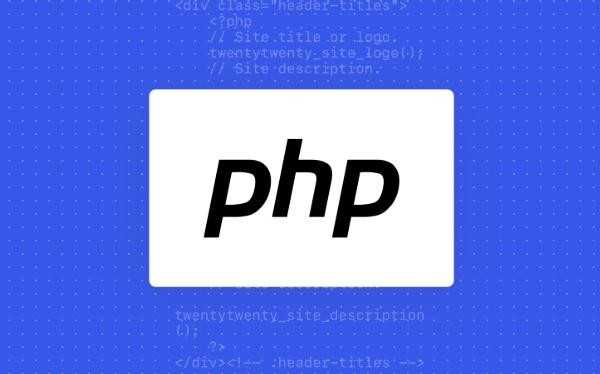To remove elements from a PHP array, use different methods based on your needs. 1. To remove by value when the key is unknown, use array_search() with unset(). 2. To remove by known key, directly use unset(). 3. To reindex numeric keys after removal, apply array_values(). 4. To remove elements based on a condition, use array_filter(). Each method serves a specific scenario—whether dealing with values, keys, or dynamic conditions—and ensures proper handling of array structures.

Removing an element from a PHP array might seem straightforward, but depending on what you want to achieve—like preserving keys or reindexing—you might need slightly different approaches. Here’s how to do it right.

Remove by Value (If You Don’t Know the Key)
If you know the value of the element you want to remove but not its key, you can use array_search() to find the key and then unset it:

$array = ['apple', 'banana', 'cherry'];
$valueToRemove = 'banana';
if (($key = array_search($valueToRemove, $array)) !== false) {
unset($array[$key]);
}This works well for indexed arrays. Keep in mind that array_search() returns the first matching key if there are duplicates.
- If you're sure the value exists, skip the
!== falsecheck. - If you want to remove all occurrences, you’ll need to loop or use
array_keys()with a second parameter.
Remove by Key (If You Know the Exact Position)
If you already know the key, just use unset() directly:

$array = ['apple', 'banana', 'cherry']; unset($array[1]); // removes 'banana'
After this, the array will still have string or numeric keys as they were, so if you need a numerically indexed array again, keep reading.
One thing to note: after using unset(), the array keys won't be reindexed automatically. That can cause issues if you're looping expecting continuous indexes.
Reindex the Array After Removal
If you want to clean up the array and reset the numeric keys (for example, after removing an item), use array_values():
$array = ['apple', 'banana', 'cherry']; unset($array[1]); // remove banana $array = array_values($array); // now keys are 0 and 1 again
This is especially useful when working with numeric indexes and you need them to stay sequential—like when you’re encoding to JSON or iterating with a for loop later.
- This only works for numeric keys.
- It doesn’t affect associative arrays (with string keys), since those are meant to preserve their keys.
Optional: Filter Out Elements Based on a Condition
If you need to remove multiple elements based on some logic, array_filter() is your friend:
$array = [10, 20, 30, 40];
$array = array_filter($array, function($value) {
return $value != 20; // keeps everything except 20
});You can adjust the condition inside the callback to suit your needs. Just remember that array_filter() preserves keys unless you reindex manually with array_values().
That's basically how you handle removing elements from a PHP array. Depending on whether you're dealing with values, keys, or conditions, each method has its place.
The above is the detailed content of how to remove an element from a php array. For more information, please follow other related articles on the PHP Chinese website!

Hot AI Tools

Undress AI Tool
Undress images for free

Undresser.AI Undress
AI-powered app for creating realistic nude photos

AI Clothes Remover
Online AI tool for removing clothes from photos.

Clothoff.io
AI clothes remover

Video Face Swap
Swap faces in any video effortlessly with our completely free AI face swap tool!

Hot Article

Hot Tools

Notepad++7.3.1
Easy-to-use and free code editor

SublimeText3 Chinese version
Chinese version, very easy to use

Zend Studio 13.0.1
Powerful PHP integrated development environment

Dreamweaver CS6
Visual web development tools

SublimeText3 Mac version
God-level code editing software (SublimeText3)
 PHP Variable Scope Explained
Jul 17, 2025 am 04:16 AM
PHP Variable Scope Explained
Jul 17, 2025 am 04:16 AM
Common problems and solutions for PHP variable scope include: 1. The global variable cannot be accessed within the function, and it needs to be passed in using the global keyword or parameter; 2. The static variable is declared with static, and it is only initialized once and the value is maintained between multiple calls; 3. Hyperglobal variables such as $_GET and $_POST can be used directly in any scope, but you need to pay attention to safe filtering; 4. Anonymous functions need to introduce parent scope variables through the use keyword, and when modifying external variables, you need to pass a reference. Mastering these rules can help avoid errors and improve code stability.
 How to handle File Uploads securely in PHP?
Jul 08, 2025 am 02:37 AM
How to handle File Uploads securely in PHP?
Jul 08, 2025 am 02:37 AM
To safely handle PHP file uploads, you need to verify the source and type, control the file name and path, set server restrictions, and process media files twice. 1. Verify the upload source to prevent CSRF through token and detect the real MIME type through finfo_file using whitelist control; 2. Rename the file to a random string and determine the extension to store it in a non-Web directory according to the detection type; 3. PHP configuration limits the upload size and temporary directory Nginx/Apache prohibits access to the upload directory; 4. The GD library resaves the pictures to clear potential malicious data.
 Commenting Out Code in PHP
Jul 18, 2025 am 04:57 AM
Commenting Out Code in PHP
Jul 18, 2025 am 04:57 AM
There are three common methods for PHP comment code: 1. Use // or # to block one line of code, and it is recommended to use //; 2. Use /.../ to wrap code blocks with multiple lines, which cannot be nested but can be crossed; 3. Combination skills comments such as using /if(){}/ to control logic blocks, or to improve efficiency with editor shortcut keys, you should pay attention to closing symbols and avoid nesting when using them.
 How Do Generators Work in PHP?
Jul 11, 2025 am 03:12 AM
How Do Generators Work in PHP?
Jul 11, 2025 am 03:12 AM
AgeneratorinPHPisamemory-efficientwaytoiterateoverlargedatasetsbyyieldingvaluesoneatatimeinsteadofreturningthemallatonce.1.Generatorsusetheyieldkeywordtoproducevaluesondemand,reducingmemoryusage.2.Theyareusefulforhandlingbigloops,readinglargefiles,or
 Tips for Writing PHP Comments
Jul 18, 2025 am 04:51 AM
Tips for Writing PHP Comments
Jul 18, 2025 am 04:51 AM
The key to writing PHP comments is to clarify the purpose and specifications. Comments should explain "why" rather than "what was done", avoiding redundancy or too simplicity. 1. Use a unified format, such as docblock (/*/) for class and method descriptions to improve readability and tool compatibility; 2. Emphasize the reasons behind the logic, such as why JS jumps need to be output manually; 3. Add an overview description before complex code, describe the process in steps, and help understand the overall idea; 4. Use TODO and FIXME rationally to mark to-do items and problems to facilitate subsequent tracking and collaboration. Good annotations can reduce communication costs and improve code maintenance efficiency.
 How to access a character in a string by index in PHP
Jul 12, 2025 am 03:15 AM
How to access a character in a string by index in PHP
Jul 12, 2025 am 03:15 AM
In PHP, you can use square brackets or curly braces to obtain string specific index characters, but square brackets are recommended; the index starts from 0, and the access outside the range returns a null value and cannot be assigned a value; mb_substr is required to handle multi-byte characters. For example: $str="hello";echo$str[0]; output h; and Chinese characters such as mb_substr($str,1,1) need to obtain the correct result; in actual applications, the length of the string should be checked before looping, dynamic strings need to be verified for validity, and multilingual projects recommend using multi-byte security functions uniformly.
 Quick PHP Installation Tutorial
Jul 18, 2025 am 04:52 AM
Quick PHP Installation Tutorial
Jul 18, 2025 am 04:52 AM
ToinstallPHPquickly,useXAMPPonWindowsorHomebrewonmacOS.1.OnWindows,downloadandinstallXAMPP,selectcomponents,startApache,andplacefilesinhtdocs.2.Alternatively,manuallyinstallPHPfromphp.netandsetupaserverlikeApache.3.OnmacOS,installHomebrew,thenrun'bre
 Learning PHP: A Beginner's Guide
Jul 18, 2025 am 04:54 AM
Learning PHP: A Beginner's Guide
Jul 18, 2025 am 04:54 AM
TolearnPHPeffectively,startbysettingupalocalserverenvironmentusingtoolslikeXAMPPandacodeeditorlikeVSCode.1)InstallXAMPPforApache,MySQL,andPHP.2)Useacodeeditorforsyntaxsupport.3)TestyoursetupwithasimplePHPfile.Next,learnPHPbasicsincludingvariables,ech






